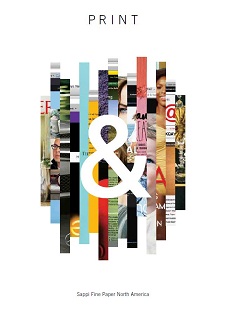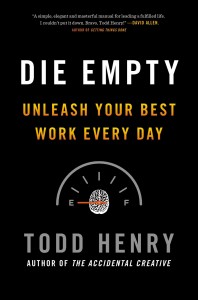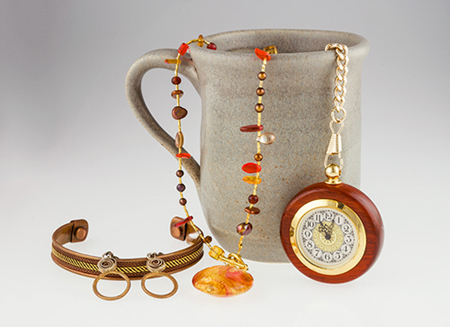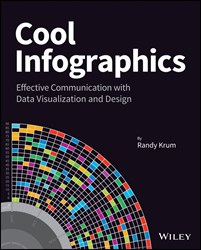 DESIGNERS. At the PRINT 13 conference in September, the Graphic Arts Show Company (GASC) presented its 2013 “Positively Print” award to Sappi Fine Paper North America, a leading producer of coated papers used in magazines, catalogs, books, and high-end print advertising. Sappi was honored for producing “Print &,” a gorgeously designed publication that explains and illustrates the changing role of printed publications in integrated marketing campaigns.
DESIGNERS. At the PRINT 13 conference in September, the Graphic Arts Show Company (GASC) presented its 2013 “Positively Print” award to Sappi Fine Paper North America, a leading producer of coated papers used in magazines, catalogs, books, and high-end print advertising. Sappi was honored for producing “Print &,” a gorgeously designed publication that explains and illustrates the changing role of printed publications in integrated marketing campaigns.
“For the past decade, the increase in digital advertising spend has led to assumptions that print would soon reach its demise,” says Patti Groh, marketing director, Sappi Fine Paper North America. “Industry studies show that the opposite is true. The fact of the matter is that while this industry is constantly evolving, print and digital are proving to be mutually supportive, and brand marketers are learning to play to the strengths of each.”
The publication points out that “Brand marketers will adopt whatever tools produce the most effective results. Today, that means a combination of approaches, strategically planned to get the greatest impact for the dollars spent.” While online media is immediate and accessible, print is more permanent and elegant.
Before the digital revolution, marketing-communications managers, ad planners, and publishers had only eight media channels from which to choose. Today there are well over 100: “With a plethora of new platforms being declared the ‘next big thing,’ assessing which will survive, who it will appeal to, and how best to spend precious dollars to the wall is like pinning Jell-O to the wall.”
“Print &” also cites a neuroscience study commissioned by the Interactive Advertising Bureau that discovered that paper-based marketing (direct mail) leaves a “deeper footprint” in the brain. Because the physical act of handling tangible material feels more “real” to the brain than digital, it triggers emotional reactions that get internalized into the viewer’s memory. As “Print &” points out, “The brain associates the tactile quality of the piece with its perception of the brand.” Perhaps this explains why print continues to be popular medium for marketing high-value good and services.
“Print &” also reports on studies that show the Millennial generation may be more receptive to print than some might expect. In a Two Sides study published in 2012, 69 percent of 18 to 24 year-olds said they prefer print and paper communications to reading off a screen.
Case studies and other examples featured in “Print &” confirm that when print and other media are strategically combined in marketing campaigns, the combination can produce the greatest return of marketing impact on dollars spent.
Through the use of QR codes and augmented reality, print and new media merge into one, generating endless possibilities for the future of print and consumer interaction. Sappi demonstrated this interplay in “Print &” by developing 10 unique print/digital experiences – ranging from a game of pool to a trip on historic Route 66. To access the augmented-reality (AR) content that has been laid over the printed content in “Print &,” you must download the free Junaio AR browser application.

“The design industry has reached a turning point, and we are no longer constrained to only one platform versus the other,” said Kit Hinrichs, principal and creative director, Studio Hinrichs. “With innovations in printing and developments in new technology, we are now able to transcend the traditional method of thought and can truly start projects thinking in terms of the possibilities, not the limitations.” Studio Hinrichs and writer Delphine Hirasuna, editor of @Issue Journal, collaborated with Sappi to produce “Print &.”
“Print &” was printed on Sappi’s McCoy, a premium coated sheet known for its whiteness and unsurpassed printability. In addition to illustrating how print could be integrated with augmented reality technologies, the publication demonstrates some creative ways to make four-color offset-printed pieces more tactile, dimensional, and engaging.
As you flip through the pages, you will see creative uses of new printing and finishing techniques such as flocking, soft-touch coating, reticulated varnish, photochromic ink, raised UV coating, engraving, liquid foil, thermography, embossing, metallic inks, and unusual folds.
For example, on images of two gloved hands you can see (and feel) that it’s possible to add a rubbery texture to a printed picture of a surgeon’s glove, a leather-like feel to a printed photo of a driving glove, or a woolly texture to a photograph of a winter glove.
“Print &” was first distributed to graphic designers who attended the 2013 HOW Design Live Conference in San Francisco in June. Designers can request a copy of “Print &” from their local Sappi Fine Paper rep. To find a sales rep in your area, visit the “Print &” page on the Sappi Fine Paper North America website: http://www.na.sappi.com/education/probookshelf/print-and
GASC’s Positively Print Award
After you read through “Print &,” it will be clear why GASC chose Sappi for this year’s “Positively Print” award.
“The purpose of the Positively Print program is to share examples of creative and effective print advocacy campaigns with the entire graphic-communications industry,” explains GASC President Ralph Nappi, “We want to demonstrate to companies involved in print that advocating for print can be done and that it helps to carry a powerful message that will benefit the entire industry.”
Positively Print entries can be produced in any media, as long as the entry targets print buyers, print influencers, and the broader community. Nominees are evaluated on their originality and how effectively they deliver the message that printed communications are an integral component of modern marketing campaigns.
The Positively Print program was created and is administered as an extension of the Executive Outlook Conference by GASC co-owners, the National Association for Printing Leadership (NAPL), NPES The Association for Suppliers of Printing, Publishing and Converting Technologies, and the Printing Industries for America.
LINKS
Print & by Sappi Fine Paper North America
Sappi Fine Paper North America
Positively Print Award
 Galloree.com is a new print-on-demand website for graphic designers, photographers and creatives to publish, promote and sell their artwork online.
Galloree.com is a new print-on-demand website for graphic designers, photographers and creatives to publish, promote and sell their artwork online. Unlike other sites that offer sellers a predetermined commission, Gallorree.com lets you set the prices for the products that have been decorated with your images. Gallorree offers low wholesale pricing for each item, enabling you to add your own mark-up. .
Unlike other sites that offer sellers a predetermined commission, Gallorree.com lets you set the prices for the products that have been decorated with your images. Gallorree offers low wholesale pricing for each item, enabling you to add your own mark-up. .






